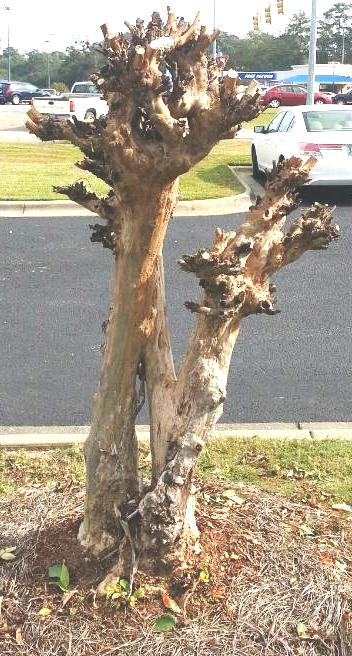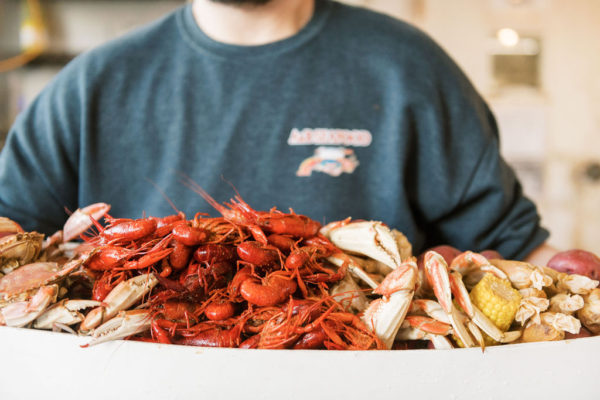
Low Cost Spay Neuter Event comes to Houma
December 25, 2022
Updated Louisiana Carbon Monoxide Law goes into effect on Jan. 1
December 26, 2022By Heather Kirk-Ballard LSU AgCenter Horticulturist
Crape myrtles (Lagerstroemia indica) are one of the most controversial and often-discussed ornamental plants among gardeners, landscapers, conservationists, naturalists, growers, researchers and educators. How did the crape myrtle become such a hot topic for discussion?
First things first — is it crepe or is it crape? Check any number of references and you are likely to find it spelled either way. Crape is the preferred name and what we most commonly use here in Louisiana.
The topic that always gets horticulturists riled up is the pruning practices. You have likely seen a crape myrtle hacked back to just a trunk in landscapes across the South. We have given it the name “crape murder.” Do not be ashamed if you have committed crape murder in the past. Plenty of bad gardening practices are out there, and this is just one of them. It comes from misinformation in most instances and practicing what we see. Fortunately, trees take this abuse and generally come back each spring.
However, this excessive pruning can lead to structurally weak wood. It stresses the trees and makes them more susceptible to both insects and disease. Continuous pruning like this can also cause unsightly knobbing at the cut site, giving the trees a gnarly look.
According to retired LSU AgCenter horticulturist Allen Owings, crape myrtles require little if any pruning. Some reasons to prune are to remove dead or damaged limbs; to remove low-hanging limbs that shade out lawns and garden beds or are in the way of mowing paths; and to obtain a specific landscape look.
Winter is the best time to prune. This will allow you to see the form of the tree, and disposing limbs will be easier and less heavy without foliage.
Another issue with crape myrtles is the bark scale that has become a real problem here in the Gulf South. Crape myrtle bark scale is an introduced insect pest from Asia, and it has a great affinity for crape myrtle trees. The problem usually goes unnoticed until plants begin turning black with a fungus called sooty mold when it begins to grow on insect droppings.
The disease has spread from the early 2000s throughout the South, affecting more and more trees. The management practices sometimes call for chemicals that can be harmful to the environment and ecosystems if not used properly, and this can be controversial for conservationists and naturalists.
Another controversy surrounding crape myrtles is that they are not native to the United States. They are actually native to China and other Asian countries. These trees first made their way to England and from there to the United States by way of Charleston, South Carolina, in 1786. Since then, they have become a staple in the Southern landscape.
Recorded history and early folklore show that the first crape myrtles were grown by the French botanist and explorer Andre Michaux. He was said to have sent trees from his nursery to the gardens of Thomas Jefferson at Monticello and George Washington at Mount Vernon.
One issue with crape myrtles is they easily reseed themselves. Many non-native species that reproduce prolifically like crape myrtles are oftentimes considered invasive. If left unchecked, these plants can outcompete native species, tipping the balance of nature in an unfavorable position.
Non-native species compete with native plants, often winning outright and decreasing the biodiversity and the balance that is so important to our environment and fragile ecosystems.
All controversy aside, crape myrtles are beautiful plants and highly prized here in the South. Crape myrtles come in many varieties with different flower colors, beautiful arching branches and varying degrees of peeling bark. In addition to their summer bloom interest, crape myrtles are among some of the best plants for fall foliage color.
Like so many other exceptional things that have happened this year, crape myrtle fall foliage change has been phenomenal. People all over town are taking notice and asking what type of tree that is. Many are shocked to find when they ask that it is a crape myrtle. With some luck, we have had fair rainfall, a few cold snaps and light freezes that have led to one of the most memorable fall color changes here in Louisiana in quite some time.
Vibrant colors of red and orange coupled with peeling bark that gives way to smooth tan and cinnamon-colored trunk brings not only winter interest but also visual interest all year round. The hybrid cultivars are what give us such great color this year — particularly the Lagerstroemia indica x fauriei varieties, such as Acoma, Muskogee and Natchez.
Some other redeeming qualities of crape myrtles are that they love heat and humidity, tolerate drought and grow quickly, making them ideal for our climates in the South. For these reasons, crape myrtles are ranked as one of the South’s most popular ornamental trees.
Crape myrtles are, botanically speaking, a tall-growing deciduous shrub that can be trained to look like a tree with one or two main trunks. Trees can reach heights of up to 30 feet, depending on the cultivar. Like everything in life, there are pros and cons to its use as a landscape plant. It is up to us to strike the balance and to be good stewards of the Earth. If there is one thing we can agree on, crape myrtles are beautiful plants.








